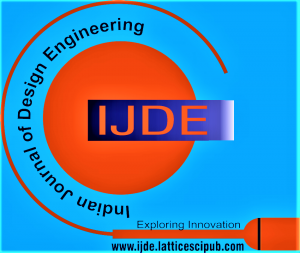An Experimental Study on Mechanical Properties of Self Compacting Concrete by using Fiber Reinforcement
Gopu Anil1, Gomasa Ramesh2
1Gopu Anil, M.Tech Scholar, Department of Civil Engineering, Vaagdevi College of Engineering, Warangal, India.
2Gomasa Ramesh, M.Tech Scholar, Department of Civil Engineering, Vaagdevi College of Engineering, Warangal, India.
Manuscript received on 15 January 2022 | Revised Manuscript received on 25 January 2022 | Manuscript Accepted on 15 February 2022 | Manuscript published on 28 February 2022 | PP: 12-18 | Volume-2 Issue-1, February 2022 | Retrieval Number: 100.1/ijde.C8017021322 | DOI: 10.54105/ijde.C8017.021322
Open Access | Ethics and Policies | Cite | Mendeley | Indexing and Abstracting
© The Authors. Published by Lattice Science Publication (LSP). This is an open access article under the CC-BY-NC-ND license (http://creativecommons.org/licenses/by-nc-nd/4.0/)
Abstract: The invention of Self Compacting Concrete has been tremendous and continuing growth in the working area over the past decade, culminating in its widespread usage in today’s reality. It outperforms regular cement in application and completion, cost, work reserve funds, and solidity. The addition of strands enhances its qualities, particularly those related to SCC’s post- break behaviour. The goal is to investigate the strength properties of SCC when mixed with various types of strands. Different strand types and filament speeds are among the variables studied. The essential characteristics of SCC, including strength, break energy, sturdiness, and sorptivity, must be controlled. The hydrated design and security development between fiber and blend will be examined using an electron microscope to examine the tiny building of several mixes. 12mm cut glass fiber, carbon fiber, and basalt fiber will be used in the request, as they have been for quite some time. 0.0 percent, 0.1 percent, 0.15 percent, 0.2 percent, 0.25 percent, and 0.3 percent of strands are removed based on volume. The request is broken down into two parts. The first half involves creating a planned blend for SCC of a detailed assessment, such as M30. The second half involves adding filaments such as glass, basalt, and carbon strands to the SCC blends and evaluating and verifying their plastic and hardened properties. The experiment demonstrates a modest improvement in SCC aspects by adding strands of various types and altering the volume. Carbon fiber is the most improved in the more challenging state, followed by Basalt fiber and Glass fiber, and the least improved in the plastic state due to its high-water absorption. Glass fiber fared better in the plastic state. Basalt fiber fared better in the present study regarding cost, appropriate amount, and overall viability.
Keywords: Glass fiber, Basalt Fiber, Carbon Fiber, Fracture Energy, Sorptivity & Bond development.
Scope of the Article: Fiber Reinforcement
